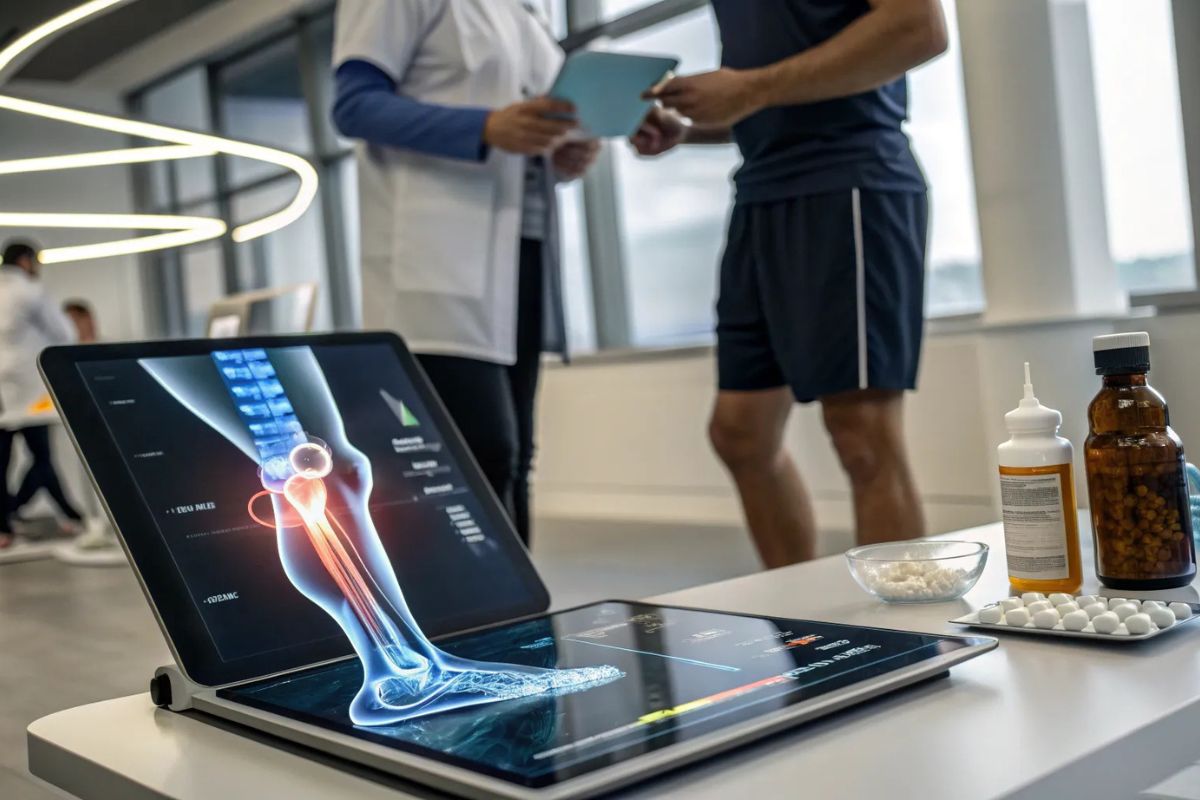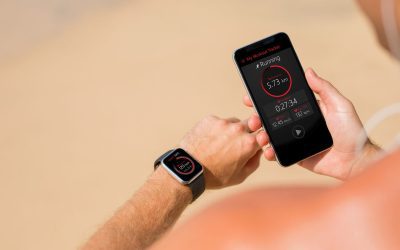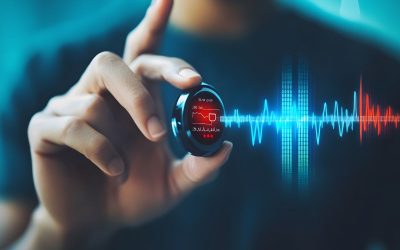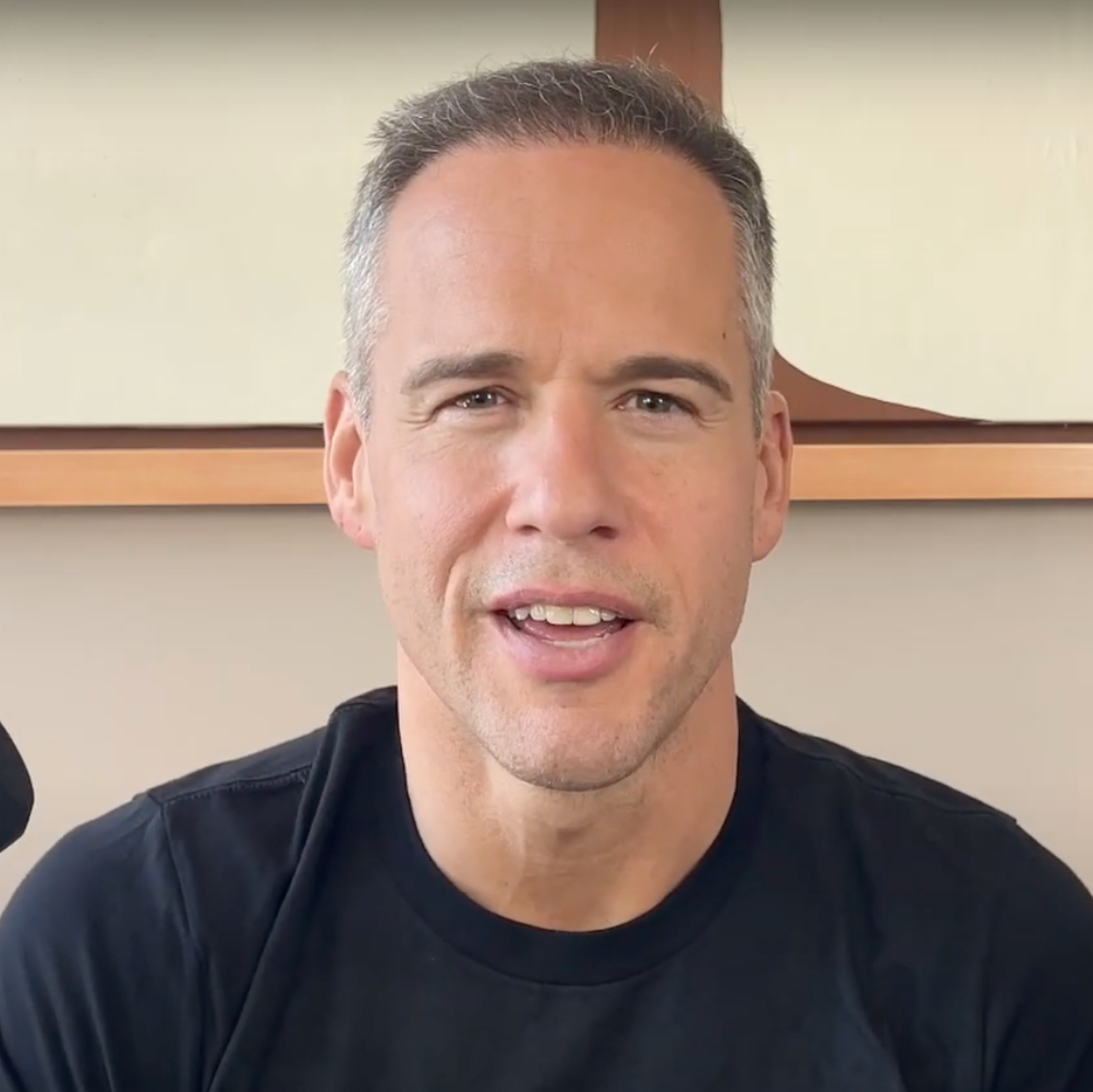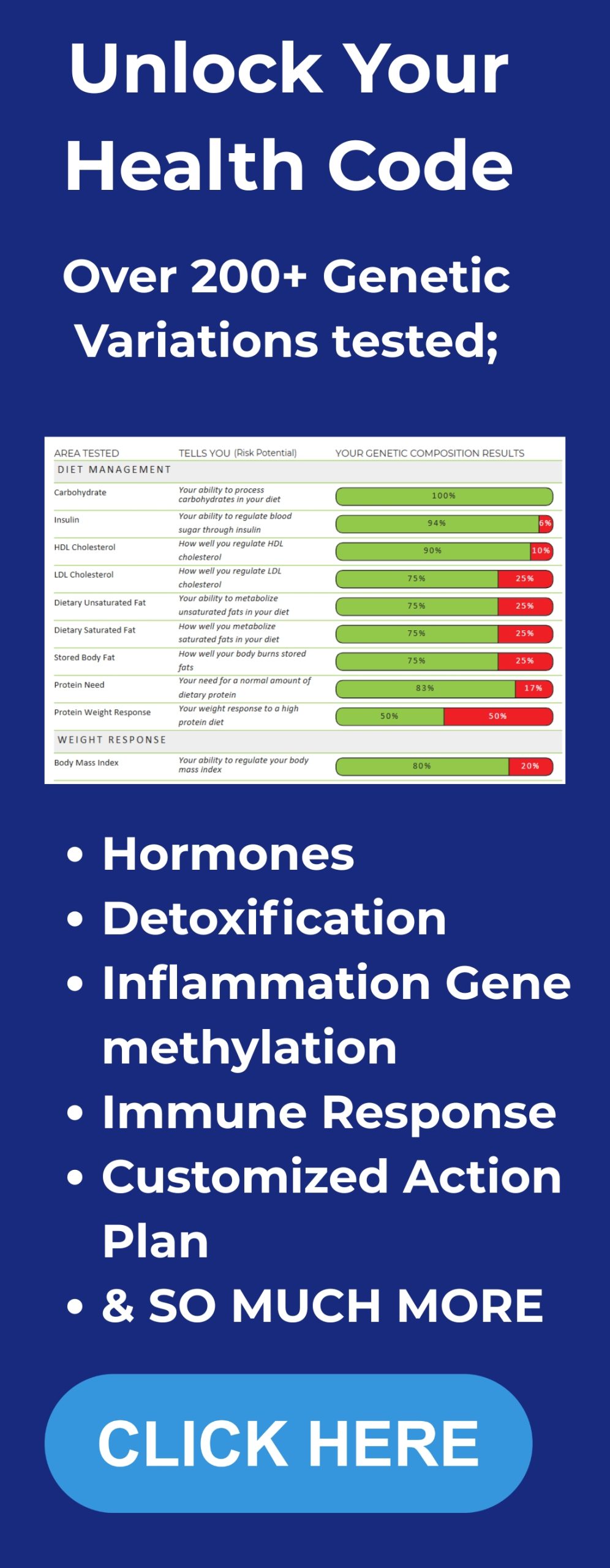Today we’re diving into one of the most promising peptides being studied for healing tendons and ligaments: BPC-157. This compound has generated a lot of interest in both research and real-world recovery settings, and for good reason. While it isn’t approved as a drug or supplement, emerging studies suggest it may play a key role in accelerating tissue repair and supporting rehabilitation after injury.
In this post, we’ll break down the science, highlight what experts are saying, and explore how supportive nutrients, vitamins, and practical rehab strategies can work alongside BPC-157 to maximize results. The goal here is to provide a clear, evidence-informed guide that helps you understand what’s known, what’s still being investigated, and how it all fits into a smart recovery protocol. As always, this information is for educational purposes only. Please consult a qualified healthcare professional before beginning any new peptide, supplement, or rehab program.
Table of Contents
- Why BPC-157 is on so many people’s radar
- What are peptides and why do they matter for healing?
- So what is BPC-157?
- Key animal studies that shaped interest
- How BPC-157 appears to help tendons and ligaments heal
- What the human evidence looks like
- Routes of administration and common dosing patterns
- Safety profile and side effects
- Legal status and quality control
- How I would approach using BPC-157 for tendon or ligament injury – a practical protocol
- Evidence-based vitamins and supplements to combine with BPC-157 for tendon and ligament healing
- Integrating supplementation into a daily timeline
- Practical cautions and red flags
- Frequently asked questions
- Final thoughts and how to proceed
Why BPC-157 is on so many people’s radar
Each year in the United States there are roughly 33 million musculoskeletal injuries seen by healthcare providers. About half of those involve tendons and ligaments, things like ankle sprains, MCL and ACL injuries, Achilles problems, patellar and quadriceps tendon injuries, and rotator cuff tears. An estimated 300,000 tendon and ligament repair surgeries are performed annually in the US. That volume of injury is what motivates interest in any therapy that might accelerate healing, improve tissue quality, reduce pain, or help patients avoid surgery when reasonable.
BPC-157 has become a focal point because early studies, mostly in animals, show striking improvements in tendon, ligament, muscle, nerve, and even gut healing. In one classic rat study, BPC-157 significantly improved Achilles tendon healing—enhancing mechanical strength, collagen organization, and functional recovery. The idea of a safe peptide that you can take orally or inject to speed recovery sounds compelling. But the real question is how evidence-based are the claims, and how might you responsibly combine BPC-157 with rehabilitation and nutritional strategies to give your tissues the best chance at recovery? That’s what I’ll tackle in this article.
What are peptides and why do they matter for healing?
Peptides are short chains of amino acids, essentially small proteins, that act as signaling molecules in the body. You already know one peptide called insulin, which regulates blood sugar. Researchers have identified over 7,000 naturally occurring peptides. They influence hormone production, cellular signaling, immune responses, and tissue regeneration. The key features that make peptides attractive therapeutically are their high specificity and short half-lives. Because they are metabolized quickly, they tend to have fewer long-term systemic effects compared with traditional hormones or steroids. That is one reason peptides are seen as promising options for targeted healing support.
Importantly, many peptide levels decline with age. That decline may in part explain why people in their 40s and 50s experience more tendon injuries than teenagers or athletes in their 20s. The concept is straightforward: if a signaling peptide helps coordinate tissue repair and its levels fall with age, augmenting that signal could theoretically restore some of the youthful healing environment.
So what is BPC-157?
BPC stands for Body Protective Compound. BPC-157 is a synthetic 15-amino-acid peptide originally derived from human gastric juice. It first attracted attention for its potential to heal gastrointestinal injuries such as ulcers and inflammatory bowel conditions. However, subsequent animal studies demonstrated benefits across musculoskeletal injuries as well: tendon and ligament tears, muscle injuries, nerve damage, and even enhanced fracture healing.
Researchers propose multiple mechanisms for BPC-157. It appears to modulate growth factor activity, stabilize blood vessels, influence nitric oxide pathways, and modulate inflammation to a degree that supports regenerative processes. For example, enhancing the nitric oxide pathway can improve local blood flow and oxygen delivery to injured tissue which in turn supports cellular repair processes and endurance. Some labs also observed improved collagen organization and increased fibroblast activity after BPC-157 administration.
Key animal studies that shaped interest
A few controlled animal studies illustrate why this peptide drew so much interest:
- Achilles tendon cut-and-repair in rats – In a study where researchers surgically transected the Achilles tendon in rats, animals treated with BPC-157 showed substantially better recovery compared with controls. Functional outcomes included increased load to tendon failure and improved mobility. Microscopically, treated tendons had higher counts of mononuclear cells, fewer granulocytes, more fibroblasts, and better reticular collagen fiber formation. Macroscopically the defects were smaller and reestablished tendon integrity sooner.
- MCL (medial collateral ligament) healing in rats – In a study published in the Journal of Orthopedic Research researchers surgically cut the MCL in rats. BPC-157 administered orally, topically as a cream, or via injection resulted in consistent improvements. Treated ligaments had better biomechanical strength, faster organization of connective tissue, and collagen fibers were more longitudinally oriented. Oral dosing worked comparably to topical cream in this model. This controlled rat model confirmed that oral, topical, and injected BPC-157 all hastened ligament healing and improved biomechanical outcomes.
These studies suggest two important themes: 1) BPC-157 can positively influence connective tissue healing, and 2) it can be effective by multiple routes of administration, including oral dosing. Those features help explain why clinicians and athletes have taken notice.
How BPC-157 appears to help tendons and ligaments heal
To understand BPC-157’s effects, imagine the body trying to repair a torn ligament or tendon. The initial inflammatory cascade deposits collagen quickly but often haphazardly. Think of it like dropping a bundle of pickup sticks where fibers are randomly oriented and weak. Proper healing requires a process of remodeling where collagen fibers are gradually aligned along the axis of load and tensile strength improves.
Studies indicate BPC-157 promotes:
- Better collagen deposition with more appropriate fiber orientation
- Increased fibroblast proliferation which enables more robust matrix production
- Decreased excessive inflammatory granulocytes and a shift toward mononuclear cell types that support tissue repair
- Improved microvascularization and nitric oxide-mediated blood flow improvements
The net effect is tissues that regain structural integrity faster and with better mechanical properties. That is why load-to-failure testing in animals improved with BPC-157 in experimental injury models.
What the human evidence looks like
Here is the reality check: most robust randomized human studies on BPC-157 for tendon and ligament healing do not exist yet. A 2025 systematic review highlights compelling animal data yet underscores limited human evidence where only one small case series reported symptom relief in 7 of 12 patients after intra-articular BPC-157 injections for chronic knee pain. The studies I described are preclinical, performed in animals under controlled conditions. Translating animal data to humans always requires caution. We need randomized, double-blind, placebo-controlled human trials specifically examining tendon and ligament healing, functional outcomes, and safety profiles over months to be confident about routine clinical use.
That said, clinicians and patients have reported anecdotal benefits, and the existing preclinical science provides a plausible biological mechanism for many of the observed effects. The aggregate of animal evidence suggests BPC-157 may support healing for ankle sprains, MCL and ACL injuries, Achilles tendon ruptures and tendinopathy, tennis elbow, patellar tendon injuries, quadriceps tendon injuries, rotator cuff pathology, and more.
Routes of administration and common dosing patterns
One of the unique features of BPC-157 compared with many other peptides is that it retains activity when taken orally as a pill, as a subcutaneous injection, or even topically as a cream in animal models. That gives options for people who prefer not to inject.
Common dosing patterns reported in the clinical and patient communities include:
- Oral dosing: commonly 250 mcg to 1,000 mcg (0.25 mg to 1 mg) once daily. Many people choose 500 mcg (0.5 mg) daily as a middle ground.
- Subcutaneous injection: commonly 250 mcg to 1,000 mcg once daily injected near the injury site or subcutaneously in the abdomen.
- Topical cream: variable concentrations used in studies and compounding pharmacy products. In the rat MCL study, topical application showed benefit comparable to oral dosing.
- Typical cycle: one frequently used approach is daily dosing for three months followed by a one-month break. Some clinicians and patients use continuous dosing. The three-month on, one-month off cycle is a conservative approach modeled on observed practical protocols.
Important safety note: BPC-157 is not currently approved by the US Food and Drug Administration for therapeutic use in humans. It is available in some compounding pharmacies by prescription. The World Anti-Doping Agency banned BPC-157 on January 1, 2022, so athletes competing in tested sports should avoid it unless their governing body provides otherwise. Always obtain BPC-157 through a licensed medical professional if prescribed and be cautious about online sources that may contain little or no active peptide and harmful fillers.
Safety profile and side effects
So far, published animal studies and early clinical observations suggest BPC-157 has a favorable safety profile. There are few well-documented adverse events, and a lethal dose has not been reported in the literature to date. However, the absence of evidence is not evidence of absence. Because the peptide is still considered experimental for many indications, careful monitoring and longer-term human safety studies are needed.
Potential safety considerations include:
- Unknown long-term effects – We lack long-term human data over years
- Potential for contamination or incorrect dosing when purchased from non-licensed vendors
- Interactions with other medications, especially those affecting blood pressure or coagulation, due to nitric oxide pathway effects
- Positive doping test – BPC-157 is banned by WADA
Because of these unknowns, consult your prescribing clinician and consider baseline labs and periodic monitoring if starting BPC-157 under medical supervision.
Legal status and quality control
In the US, BPC-157 is not an FDA-approved therapeutic. It can be prescribed in some practices and compounded by certain licensed pharmacies, but it is considered investigational for most human indications. Items purchased from unverified online vendors are risky. Independent testing has shown that products sold on some websites either contain no peptide or have contaminants and fillers. If you pursue BPC-157, work with a licensed clinician who can prescribe and direct you to a reputable compounding pharmacy.
How I would approach using BPC-157 for tendon or ligament injury - a practical protocol
The following is a practical plan I built after reviewing Dr. Geier’s summary and other preclinical literature, then combining that with evidence-based nutritional and rehabilitation strategies for connective tissue healing. This is not medical advice. It is a detailed educational framework for discussion with a qualified clinician.
Initial steps – assessment and baseline planning
- Obtain a formal evaluation by an orthopedic or sports medicine clinician to categorize the injury severity – sprain grade, partial tear, complete tear, or tendinopathy. Imaging studies such as ultrasound or MRI are often helpful.
- Discuss candidacy for conservative management versus surgery. Many partial tears and tendinopathies can be managed nonoperatively with a combination of biological support and structured rehabilitation.
- If BPC-157 is being considered, arrange for prescription through the clinician and source the peptide from a verified compounding pharmacy. Avoid unverified online products.
- Baseline labs I recommend discussing with your clinician: complete blood count, metabolic panel, vitamin D level, and, if relevant, inflammatory markers or coagulation studies. For a deeper layer of personalization, you might also consider DNA-based insights, which can guide nutrition and recovery strategies tailored to your genetic profile.
BPC-157 dosing plan (example)
Common, practical dosing regimens observed clinically and anecdotally include:
- Oral protocol: 500 mcg (0.5 mg) once daily, taken in the morning with or without food, for 12 weeks, followed by a 4-week break.
- Injection protocol: 250 mcg to 500 mcg subcutaneous daily near the injury site or in the abdomen, for 12 weeks, followed by a 4-week break.
- Topical protocol: if a compounded cream is used, follow the concentration and application directions provided by the pharmacy and prescribing clinician. In animal studies topical application matched oral outcomes in certain ligament models.
If you and your clinician decide to be more aggressive, some protocols escalate to 1,000 mcg (1 mg) daily for a short period, but higher doses should be approached cautiously and under supervision. If you are an athlete who is subject to drug testing, do not use BPC-157 due to its WADA ban.
Targeted rehabilitation while using BPC-157
BPC-157 is thought to optimize the biological environment for healing. It is not a substitute for mechanical rehabilitation. Tendons and ligaments heal best when they are gradually loaded to encourage proper collagen alignment. My recommended approach during a BPC-supported healing phase:
- First 0-2 weeks: protective rest relative to pain, controlled range-of-motion exercises as tolerated, edema control, and gentle isometrics.
- Weeks 2-6: gradually introduce concentric strengthening, progressive loading with low to moderate force, and specific tendon loading protocols when tolerated. For Achilles or patellar tendons, eccentric loading protocols are often effective. For ligaments, progressive resisted stabilization is important.
- Weeks 6-12: progressive heavy slow resistance training targeted to the tissue, sport-specific loading, plyometrics introduced cautiously when strength and pain parameters are adequate.
- Beyond 12 weeks: return-to-sport progression guided by objective strength, balance, and performance metrics.
Throughout, monitor pain with activity, swelling, and functional measures. Allow the biological support from BPC-157 to work alongside mechanical loading to achieve optimal collagen alignment instead of a random haphazard repair.
Evidence-based vitamins and supplements to combine with BPC-157 for tendon and ligament healing
Whether or not you use BPC-157, there are several nutrients and supplements supported by research to help connective tissue healing. Below I list a targeted regimen with specific dosages. These choices are based on known roles in collagen synthesis, inflammation modulation, and tissue repair. Discuss each with your clinician, especially if you take medications.
Daily foundational supplements
- Collagen peptides – 15 to 30 grams daily. Collagen hydrolysate supplies the specific amino acids glycine, proline, and hydroxyproline which are building blocks for tendon and ligament collagen. Best taken with vitamin C to support crosslinking and synthesis. Many studies show improved tendon properties and reduced pain with regular collagen supplementation when combined with exercise.
- Vitamin C – 500 to 1,000 mg daily. Crucial for collagen hydroxylation and crosslinking. Taking vitamin C with collagen or gelatin has been shown to improve collagen synthesis after injury or exercise.
- Gelatin with vitamin C (preloading) – If you have an exercise session or therapeutic loading planned, take 15 grams of gelatin mixed in water or juice with 50 to 100 mg vitamin C about 30 to 60 minutes before the session. This preloads the blood with collagen precursors to support activity-based collagen synthesis.
- Vitamin D3 – 2,000 to 5,000 IU daily depending on baseline levels. Vitamin D supports musculoskeletal health, immune modulation, and may influence healing. Check a 25(OH)D level and adjust dosing under clinical supervision.
- Omega-3 fish oil – 1,000 to 3,000 mg combined EPA and DHA daily. Omega-3 fatty acids help modulate inflammation and may support healing and pain reduction. Higher doses may be beneficial for robust anti-inflammatory effect but discuss bleeding risk with your clinician if you are on anticoagulants.
- Magnesium – 200 to 400 mg daily. Magnesium supports muscle relaxation and metabolism. It can help with sleep and overall recovery processes. Choose a well-absorbed form such as magnesium glycinate. As not all magnesium supplements are created equal, you can learn more about the different forms in this guide: Not All Magnesium is the Same.
- Zinc – 15 to 30 mg daily for a limited duration (6 to 12 weeks). Zinc is important for tissue repair but long-term high-dose zinc can suppress copper, so don’t exceed recommended durations without monitoring.
For foundational support, you can also explore high-quality formulations such as Magnesium and Omega-3 Fish Oil from CanPrev, which provide two of the most clinically backed nutrients for tissue recovery.
Targeted supportive agents
- MSM (methylsulfonylmethane) – 1,000 to 3,000 mg daily. MSM provides sulfur for connective tissue health and has been used for joint comfort and soft tissue health.
- Curcumin (with piperine extracts) – 500 to 1,000 mg daily of a bioavailable curcumin formula. Curcumin has anti-inflammatory and antioxidant effects and may help manage pain and inflammation during healing. Use formulas with enhanced absorption or pair with piperine when appropriate.
- Bromelain – 500 mg daily, typically as a digestive enzyme supplement accompanying meals. Bromelain has anti-inflammatory and proteolytic properties useful in tissue recovery.
- N-acetylcysteine (NAC) – 600 mg once or twice daily as an antioxidant support. NAC helps maintain glutathione and manage oxidative stress in healing.
- Arginine – 3,000 to 6,000 mg daily divided into two or three doses if used. Arginine is a nitric oxide precursor and may improve blood flow to injured tissues. Because BPC-157 may also influence nitric oxide pathways, discuss combined use with your clinician to avoid unwanted hemodynamic effects.
- Lysine – 1,000 to 3,000 mg daily. Lysine pairs with proline and glycine in collagen formation and can be provided via collagen supplementation as well.
Note about interactions: certain supplements like fish oil and curcumin can affect platelet function. If you take blood thinners or are scheduled for surgery, coordinate timing and dosing with your care team.
Integrating supplementation into a daily timeline
Here is an example daily schedule you could discuss with your clinician. The goal is to synergize supplementation with therapy and to use preloading strategies to maximize collagen synthesis around loading sessions.
- Morning upon waking: Vitamin D3, magnesium glycinate, 500 mg curcumin, zinc (if using short term).
- 30 to 60 minutes before therapy or a targeted loading session: 15 g gelatin or 10-20 g collagen peptide mixed with 50-100 mg vitamin C. If you are not exercising, you can take collagen later with breakfast.
- With meals: fish oil 1-3 g combined EPA+DHA, MSM, bromelain with lunch or dinner.
- If using BPC-157 orally: take 500 mcg once daily either morning or evening based on preference or clinician direction. If injecting, perform under clinical instruction.
- Evening: NAC if used, and use restful sleep hygiene to support recovery.
Practical cautions and red flags
- Avoid sourcing BPC-157 from unregulated online vendors. Work with a clinician and reputable compounding pharmacy.
- Stop use and contact your provider if you experience unusual symptoms such as sudden swelling, chest pain, lightheadedness, or signs of infection at an injection site.
- Athletes in tested sports should not use BPC-157 because it is banned by WADA.
- Do not mix high-dose arginine or other vasodilatory supplements without clinical consultation, especially if you have cardiovascular disease or take blood pressure medications.
Frequently asked questions
FAQ 1: Is BPC-157 a steroid or a hormone?
BPC-157 is a peptide, which is different from a steroid hormone. Peptides are short chains of amino acids that act as signaling molecules. They typically have short half-lives and more targeted actions compared to steroids, which are systemic and can produce broader side effects.
FAQ 2: Will BPC-157 get me back to sport faster?
Animal studies show improvements in tendon and ligament healing with better mechanical properties and organized collagen deposition. In humans we do not yet have large randomized controlled trials to guarantee the same magnitude of benefit. Anecdotally and in limited clinical contexts, clinicians and patients report faster recovery and improved pain and function, but we must exercise caution until higher-quality human data become available.
FAQ 3: How long do I need to take BPC-157?
Common practice patterns are daily dosing for 12 weeks followed by a 4-week break. Some clinicians and patients vary this regimen. Because most connective tissues remodel over months, a 3-month therapeutic window aligns with biological repair timelines. Your clinician may tailor the cycle to your injury severity, response, and monitoring.
FAQ 4: Which route is best – oral, injection, or topical?
Animal research suggests all three routes can be effective. Oral dosing is convenient and has been effective in preclinical models. Subcutaneous injection may be used to deliver peptide more directly and might be chosen for certain applications. Topical creams have shown benefit in some animal ligament models. The choice depends on clinician preference, availability, patient comfort, and specific injury characteristics.
FAQ 5: Are there interactions with other medications?
Potential interactions may occur with blood pressure medications, drugs that affect coagulation, and agents that modulate nitric oxide. If you are on prescription medications, discuss BPC-157 and any planned supplement regimen with your prescribing provider.
FAQ 6: Can BPC-157 replace physical therapy or surgery?
No. BPC-157 is a biological adjunct. For many tendon and ligament injuries, structured mechanical loading and rehabilitation are essential to guide collagen alignment and functional recovery. In some cases surgery is necessary. BPC-157 may help in the nonoperative healing process but should not be considered a guaranteed substitute for appropriate surgical care when indicated.
FAQ 7: Where can I learn more about the studies?
Two PubMed references commonly cited in discussions of BPC-157 and connective tissue healing include the Achilles tendon and MCL studies. You can search PubMed for the PubMed IDs 30915550 and 20225319 to review the original reports and their methods. Discuss these with your clinician to understand limitations and applicability to humans.
Final thoughts and how to proceed
BPC-157 is an intriguing peptide with compelling preclinical evidence for enhancing tendon and ligament healing. Its ability to be effective through oral dosing, injections, or topical applications is unique among peptides and makes it a practical option for many patients when used under medical supervision. The most responsible approach integrates BPC-157 (if chosen) into a comprehensive plan that includes careful assessment, structured rehabilitation, and supportive nutrition and supplements that bolster collagen synthesis and modulate inflammation.
Remember the limitations. Most of the powerful-looking evidence comes from animal models. We need randomized, placebo-controlled human trials to make definitive recommendations. Until then, proceed cautiously, work with licensed clinicians, source peptides from verified pharmacies, and use evidence-based adjunctive strategies such as collagen supplementation, vitamin C, vitamin D, fish oil, and progressive mechanical loading to give your tissues the best possible environment to heal.
For those looking to put everything together in a structured way, our Integrate program can help you combine peptides, nutrition, and rehabilitation into a cohesive plan.

